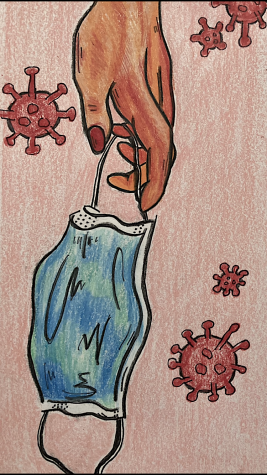We all have COVID! Now what?
April 28, 2022

I found out yesterday I have COVID-19. To be honest, I can’t say I was surprised. It’s starting to feel like everyone has COVID-19.
Unfortunately for Whitman students, we have found ourselves stuck in quite the COVID-19 surge while the rest of the world seems to have moved on. In Washington, the state experienced a peak in COVID-19 around Jan. 20, but by Feb. 23, the curve flattened and we returned to our normal baseline.
So why the sudden peak of COVID-19 at Whitman? We managed to make it until spring 2022 without a significant number of cases, so it seems odd that all of a sudden our classmates are dropping like flies. Where did this strain come from? Shouldn’t we have been better prepared?
Before getting into the mayhem happening on campus right now, I think we need to backtrack to March 2, when we received an email from Kathy Murray announcing that masks were going to be optional at the start of spring break. I, for one, was beyond excited. We hadn’t experienced a mask-less Whitman since early 2020, and it finally felt like things were going back to normal.
I think we always knew that dropping the mask requirement on campus was too good to be true. Looking back at it now, with all of the information on new COVID-19 cases, there were a lot of things that should have been done differently. It would have been wise to require masks the first two weeks back and/or do an on-campus baseline testing before allowing students to go back to classes.
At the time, I appreciated how easy it was to return to campus. I sat in my childhood bedroom in Yakima for pretty much the entirety of spring break, so I wasn’t worried about getting tested. However, not everyone had the pleasure of doing nothing for two weeks, as many of our classmates traveled around the United States and abroad.
In the past, before we could go to class, we had to test negative through the school in person—there was no ability to lie about taking a test or forgetting to take the test in our student mailboxes (not to mention that self-administered rapid tests have the highest likelihood of reporting false-negatives). Perhaps this is why we were able to avoid a COVID-19 outbreak for so long.
I suppose that doesn’t matter now, because here we are with COVID-19 running rampant through the student body. What matters now is not what we could have done, but what we need to do in the future. Following this surge, Whitman needs to take careful measures to ensure that this doesn’t happen again and hold itself accountable for the decisions that brought us to this point.
While I’m not an epidemiologist, I know we need to be more active in COVID-19 prevention.
I’m tired of masks. I hate online classes. But just because we’re tired of dealing with it doesn’t mean we can just stop trying at all.
At the beginning of the pandemic, we cared about our communities. We worried about the people that are less fortunate—the people COVID-19 affects the most. Those people are still out there. Just because we are lifting mask restrictions and testing less doesn’t mean those people don’t exist, and it certainly doesn’t make COVID-19 pose as any less of a threat.
So, let’s not jump the gun again. Let’s remind ourselves that patience is critical and negligence is selfish. If you’re like me, locked in a room waiting for COVID-19 to drain out of your body, be kind to yourself—this situation is temporary. If you’re one of the lucky ones that didn’t get sick, remember that you still can protect your health. COVID-19 will end someday, but it will only end with our care.



